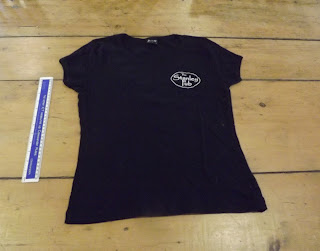In the early 1990s I lived on Lower Darnborough Street in York, in England.
The house was at the lower end of the street, and even though it never flooded due the river overtopping the staithes while we lived there, we had a few close calls when the Ouse had risen substantially after snowmelt on the Moors.
When there was a risk of flooding I would always walk down before bedtime to the junction between River Street and Clementhorpe to see how high the river was getting.
A couple of times the junction was under water and I cut down the back lane between Colenso and River street to get down to Clementhorpe.
The back lane was a normal, quite unremarkable back lane of the sort that are found all over England between streets of terrace houses that allowed access from the street to people's back yards and were often used by night soil collectors in the days before sewage, and more recently by bin men collecting rubbish as well as providing access for the men delivering coal in the days when coal fires were the main source of heat in homes in England.
Sometimes you can see still hatches like oversize cat doors in the walls of people's back yards - the idea was that the night soil collectors would open the hatch, remove the poo bucket and (hopefully) replace it.
I can't remember noticing any poo bucket hatches but I do remember that the lane was paved with these incised pattern hexagonal ceramic bricks that looked a bit like engineering bricks.
Back lane behind Colenso St - Clementshall Local History Group
At the time remember noticing them and thinking that they looked pretty unique, and I started noticing them poking out in a number of places round about in the kerbside gutters that hadn't been fully tarred over.
Given my insatiable curiosity about such things, you might have thought I would have researched them at the time, but this was just before the internet became a thing, and there was no google, no wikipedia, and no search engines - even altavista was a year or two in the future, so I pigeonholed the topic, meaning to come back to it, but never did.
York, is of course short of local sources of building stone - which is why most of the old city is built of local brick, and I just sort of assumed that it was a sensible Victorian response to a shortage of hard stone to turn into cobbles, and probably made in the local brickworks.
It turns out I was wrong on both counts - unlike engineering bricks which are made of clay and fired at a high temperature, the scoria bricks were made on Teeside of slag from blast furnaces that resulted in a hard, durable and waterproof brick.
Apparently they were also used as ballast on ships and exported to the Netherlands, Canada, the West Indies and other places.
I havn't been able to find any record of their use in Australia, but when Launceston was debating the introduction of tram system in the early 1900s, one of the city engineers wrote to a number of similar sized towns in Britain for details of their tramway systems.
One of the cities that replied was Darlington, which commented on the use of scoria bricks to surface the tramway between the tracks.
Historic photographs of the Launceston tram system suggest that they used a fairly standard infill, so they obviously decided not to follow Darlington's lead.








